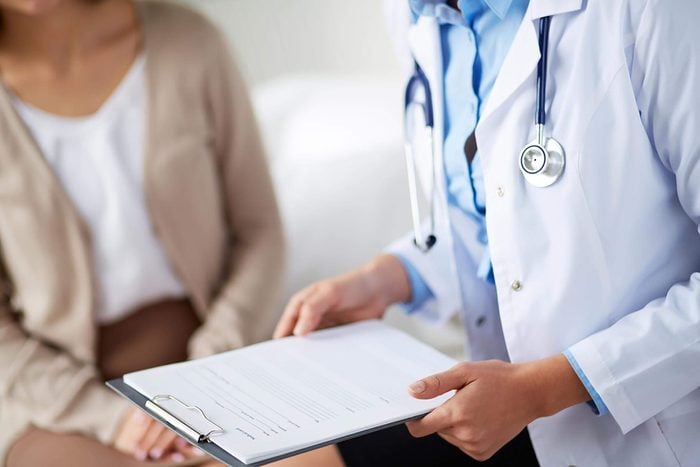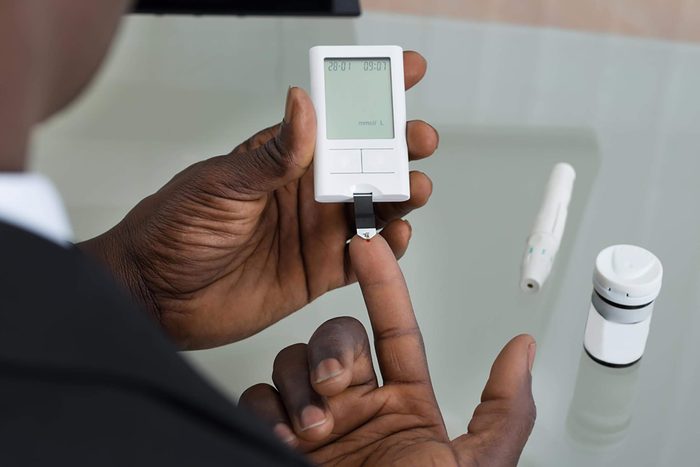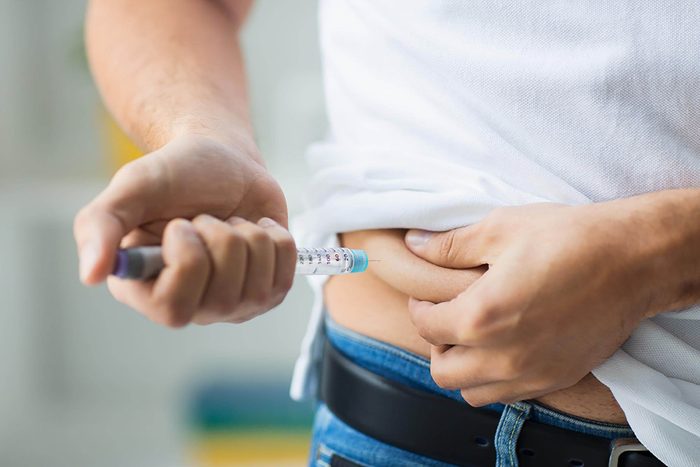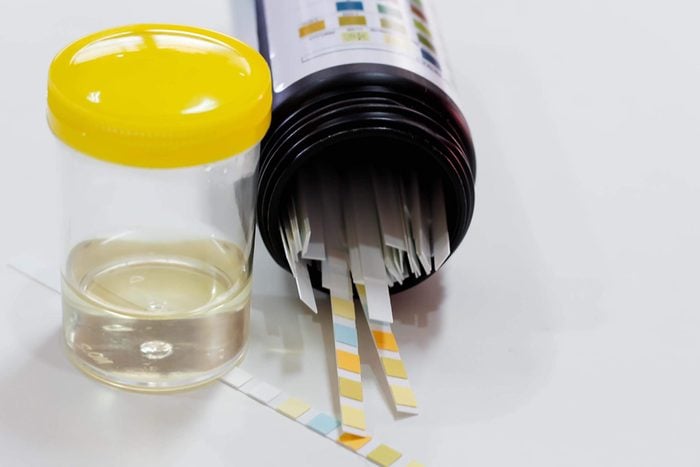
The differences between blood sugar extremes
Both hyperglycemia and hypoglycemia are a sign that a person has difficulty regulating their blood sugar, or blood glucose. Anyone can occasionally have high or low blood sugar levels, for a variety of reasons. For example, surgery or trauma can sometimes cause blood sugar to soar, and too much alcohol can block the liver from boosting blood glucose when you need it, so blood sugar can drop in those cases.
However, people with diabetes end up with these extremes, called hyperglycemia (too high) and hypoglycemia (too low), much more often than those without the condition.
“Hyperglycemia is defined as abnormally high blood sugar levels,” says Tanya Zuckerbrot, New York City-based registered dietitian, bestselling author, and founder of The F-Factor Diet. In people with diabetes, it occurs when the body does not have enough insulin to bring glucose into the cells for energy, or (in the case of type 2 diabetes), you make enough insulin—sometimes too much—but insulin resistance means the hormone is no longer working as it should.
In either case, you have more blood sugar than your body can handle, which is toxic to the body’s cells. On the other hand, hypoglycemia is defined as abnormally low blood sugar levels, says Zuckerbrot. “When blood sugar begins to fall, a hormone called glucagon signals the liver to release stored glucose to raise blood sugar back to normal. If this does not occur you experience hypoglycemia.”
This can happen if you have diabetes and are taking insulin or other blood sugar-lowering medications and the blood sugar levels accidentally go too low.

Warning signs of hyperglycemia
How can you know if you have blood sugar overload? “Hyperglycemia symptoms can include thirst, urination, blurry vision, and depending on the severity, dizziness, nausea, and vomiting, or reduced concentration and awareness,” says Kathleen Dungan, MD, an endocrinologist at The Ohio State University Wexner Medical Center. “It is important to note that depending upon the severity, hyperglycemia may not cause any symptoms at all.”
This is why people with diabetes monitor their blood sugar, and take steps—whether that’s exercise, oral medication, insulin, or other treatments—to help the body absorb it.

Be on the lookout for hypoglycemia symptoms
One of the medical reasons you’re always hungry could be if you’re experiencing hypoglycemia. Most of us have probably had that “hangry” feeling of needing to eat right now, which may be because our blood sugar was low.
“Early symptoms include shakiness, nervousness, sweating, and hunger, which occur because the body’s sympathetic hormone responses are in full action, releasing epinephrine, norepinephrine, and other hormones,” Dr. Dungan says. “In more severe or recurrent hypoglycemia, people may only recognize it when the brain starts to run low on its critical source of fuel, with symptoms including difficulty thinking, blurry vision, and dizziness.”
For people with diabetes, severe hypoglycemia is a medical emergency that can progress to potentially life threatening seizures and coma. Hypoglycemia can happen if they take too much insulin without enough food, or with too much physical activity.
This is another reason why people with type 1 diabetes monitor their blood sugar carefully. (People with type 2 may or may not be taking insulin, so they may monitor their blood sugar less frequently or not at all, depending on their doctor’s recommendation.)

Changes in diet or exercise can mess with blood sugar
Among the everyday habits that might be ruining your diabetes control—or your blood sugar—are changes to diet or exercise. “If your body uses up all of the available glucose in the blood with no additional glucose coming in, you can run the risk of hypoglycemia,” says registered dietitian Erin Palinski-Wade, a certified diabetes educator (CDE), and author of 2 Day Diabetes Diet. “Skipping meals or increasing exercise without adjusting your carbohydrate intake can increase the risk of low blood glucose levels.”
And because carbs convert to glucose in the blood, “inactivity coupled with an excessive intake of carbohydrates can increase blood glucose levels and lead to hyperglycemia,” Palinski-Wade says.

You don’t have to have diabetes to have either condition
Although both hypoglycemia and hyperglycemia are more common among people with diabetes, they could be signs you’re not taking good care of yourself even if you don’t have diabetes.
“The most common example of hypoglycemia in people who do not have diabetes is reactive hypoglycemia, where one eats a large meal, usually high carbohydrates, and the resulting rush of insulin causes the blood sugar to drop too low,” says Idie Clement, RN, certified diabetes educator (CDE), of Piedmont Atlanta’s Diabetes Resource Center. “Illness and stress also bump up blood sugar levels and can cause hyperglycemia.”
Certain medications can also increase your risk for blood sugar issues. People who do not have diabetes but do experience reactive hypoglycemia or stress hyperglycemia are at risk for diabetes and should be screened periodically for diabetes.

Avoiding the “dawn phenomenon”
There are some little-known facts about diabetes, and one is the dawn phenomenon, which can mess with blood sugar. “Dawn phenomenon describes what happens to our bodies in the early morning hours,” says Clement. “Our counterregulatory hormones wake up our bodies by bumping up the blood sugars. For this reason, fasting blood sugar levels can be elevated.”
For people with diabetes, this surge of blood sugar in the morning should be monitored to prevent hyperglycemia.

Watch out for “hypoglycemia unawareness”
Among the simple tricks for living well with diabetes is recognizing what can lead to blood sugar problems. “Hypoglycemia unawareness can occur when you have had diabetes a long time and develop a particular neuropathy, or nerve damage,” Clement says. “When this happens, the person with diabetes loses the ability to sense a low blood sugar and fails to respond appropriately. This can be dangerous, as thinking may become impaired with low blood sugars.”
Dr. Dungan also says that with recurrent or severe hypoglycemia people don’t notice early warning symptoms because the hormone response in the brain is less strong. If you have diabetes and are taking insulin, monitor your levels closely because you might not otherwise be able to tell if you have hypoglycemia.

Complications of untreated blood sugar issues
Hyperglycemia and hypoglycemia can have some dangerous complications in and of themselves. “If left untreated, hyperglycemia can lead to end organ damage, especially to the eyes, the kidneys, and the nervous system,” says Dr. Dungan.
Zuckerbrot says that blindness, immune dysfunction, and impaired skin and wound healing are other complications.
For hypoglycemia, “the most severe events could result in loss of consciousness, seizure, coma, or death if not treated,” Dr. Dungan says. If you have diabetes, medical IDs are suggested in the event of a sudden blood sugar problem or another emergency.

What you should do for hypoglycemia
Among the life-saving changes you must make if you have diabetes is learning how to handle an attack of out-of-whack blood sugar. For hypoglycemia, “early symptoms can usually be treated by consuming 15 to 20 grams of a simple carbohydrate such as candy, fruit juice, soft drinks, or glucose tablets,” Zuckerbrot says. If you have diabetes, the American Diabetes Association recommends you talk to your healthcare provider about obtaining an injectable glucagon kit, which stimulates your body to release stored glucose in the event of hypoglycemia.
Those you are in frequent contact with (such as family members and co-workers) can be trained to administer it to you if you lose consciousness. Dr. Dungan also recommends that measures should be taken, like an adjustment of medication, to prevent a recurrence.

What you should do for hyperglycemia
For hyperglycemia, it can be crucial to test your urine for waste products called ketones, which are produced when there isn’t enough insulin to process glucose. High amounts can be poisonous and lead to ketoacidosis, or diabetic coma. If you have hyperglycemic symptoms, the U.S. National Library of Medicine advises testing for ketones using urine strips or your glucose meter.
If ketones are present, call your doctor right away—you may need to go to the hospital to receive insulin and other fluids to treat the condition. To manage hyperglycemia in the long-term, “treatment for type 1 diabetes will be diet and will always include insulin,” Clement says. “For type 2 diabetes, treatment involves lifestyle modification—diet and exercise—and may include medication.”

How to ensure your blood sugar stays stable
In this case, whether hyperglycemia vs hypoglycemia, the advice is the same. “Avoid simple carbohydrates such as white bread, pretzels, bagels, white rice, sugary beverages, candy, and cookies—and eat more fiber!” Zuckerbrot says. “When you follow a diet rich in fiber you feel full after eating and you’ll generally eat less throughout the day, leading to weight loss, decreasing the risk for diabetes, and better control of blood glucose levels.”
And because complex carbs take longer to digest than refined carbs, your blood sugar remains more stable. A study published in the New England Journal of Medicine showed that people with diabetes who ate 50 grams of fiber a day were able to control their blood glucose better than those who ate far less.
Zuckerbrot also says portion control is key to making sure you don’t eat too many carbs. In addition, “balancing dietary choices with exercise can also help the body to utilize blood glucose faster, preventing spikes,” Palinski-Wade says. Next, check out if eating too much sugar causes diabetes.

